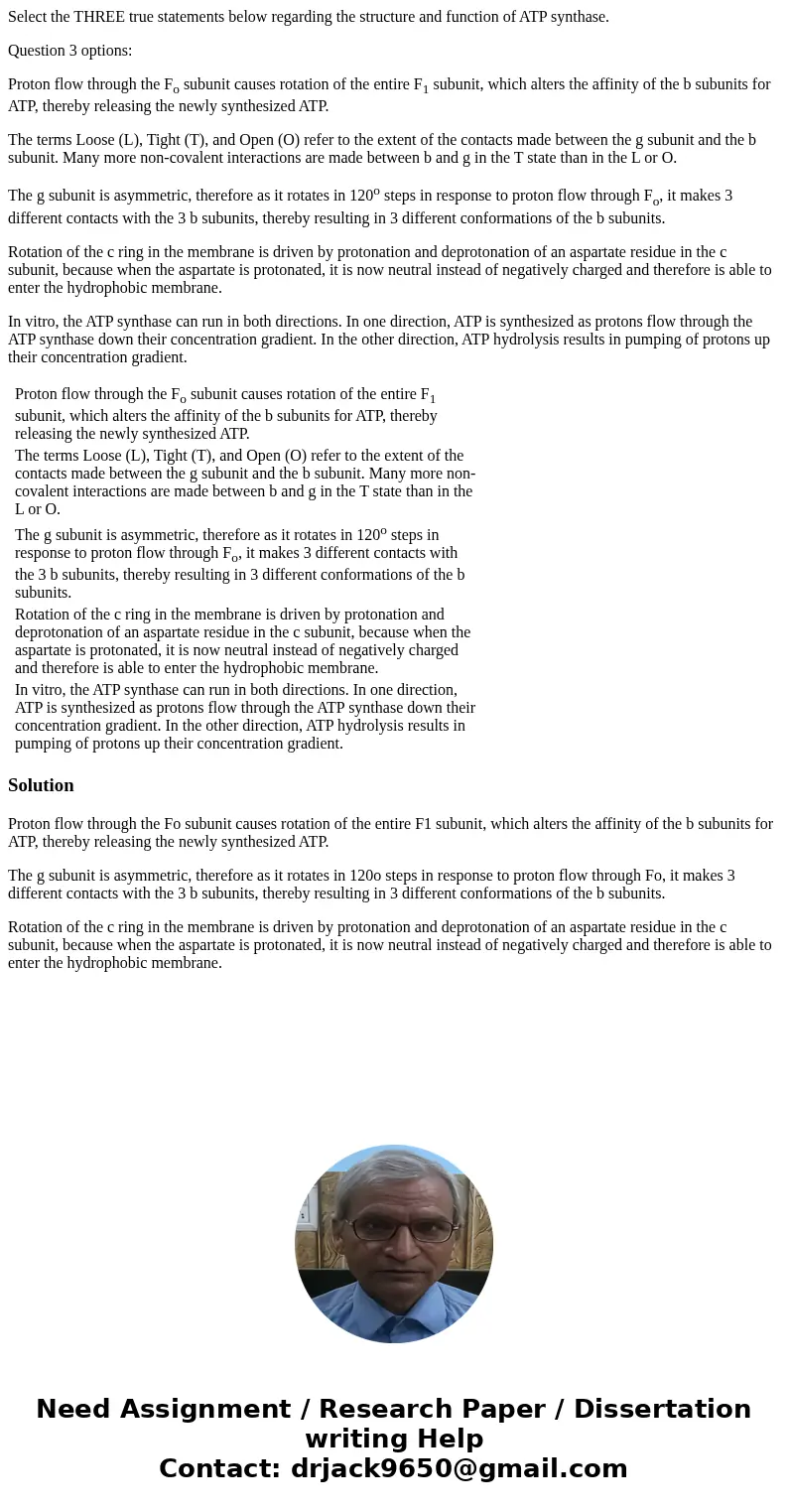Select the THREE true statements below regarding the structu
Select the THREE true statements below regarding the structure and function of ATP synthase.
Question 3 options:
Proton flow through the Fo subunit causes rotation of the entire F1 subunit, which alters the affinity of the b subunits for ATP, thereby releasing the newly synthesized ATP.
The terms Loose (L), Tight (T), and Open (O) refer to the extent of the contacts made between the g subunit and the b subunit. Many more non-covalent interactions are made between b and g in the T state than in the L or O.
The g subunit is asymmetric, therefore as it rotates in 120o steps in response to proton flow through Fo, it makes 3 different contacts with the 3 b subunits, thereby resulting in 3 different conformations of the b subunits.
Rotation of the c ring in the membrane is driven by protonation and deprotonation of an aspartate residue in the c subunit, because when the aspartate is protonated, it is now neutral instead of negatively charged and therefore is able to enter the hydrophobic membrane.
In vitro, the ATP synthase can run in both directions. In one direction, ATP is synthesized as protons flow through the ATP synthase down their concentration gradient. In the other direction, ATP hydrolysis results in pumping of protons up their concentration gradient.
| Proton flow through the Fo subunit causes rotation of the entire F1 subunit, which alters the affinity of the b subunits for ATP, thereby releasing the newly synthesized ATP. | |
| The terms Loose (L), Tight (T), and Open (O) refer to the extent of the contacts made between the g subunit and the b subunit. Many more non-covalent interactions are made between b and g in the T state than in the L or O. | |
| The g subunit is asymmetric, therefore as it rotates in 120o steps in response to proton flow through Fo, it makes 3 different contacts with the 3 b subunits, thereby resulting in 3 different conformations of the b subunits. | |
| Rotation of the c ring in the membrane is driven by protonation and deprotonation of an aspartate residue in the c subunit, because when the aspartate is protonated, it is now neutral instead of negatively charged and therefore is able to enter the hydrophobic membrane. | |
| In vitro, the ATP synthase can run in both directions. In one direction, ATP is synthesized as protons flow through the ATP synthase down their concentration gradient. In the other direction, ATP hydrolysis results in pumping of protons up their concentration gradient. |
Solution
Proton flow through the Fo subunit causes rotation of the entire F1 subunit, which alters the affinity of the b subunits for ATP, thereby releasing the newly synthesized ATP.
The g subunit is asymmetric, therefore as it rotates in 120o steps in response to proton flow through Fo, it makes 3 different contacts with the 3 b subunits, thereby resulting in 3 different conformations of the b subunits.
Rotation of the c ring in the membrane is driven by protonation and deprotonation of an aspartate residue in the c subunit, because when the aspartate is protonated, it is now neutral instead of negatively charged and therefore is able to enter the hydrophobic membrane.

 Homework Sourse
Homework Sourse